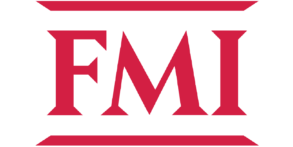This article was contributed by Steena Chandler and Rusty Sherwood of FMI as part of the BuiltWorlds Verified Contributor Program. View FMI’s last VCP post by clicking here, or visit FMI’s Company Directory Page to learn more.
 In a span of mere weeks, the coronavirus has swept across the United States like a severe winter storm. This chilling disruptor has altered “business as usual” for every major industry in the world, possibly forever. The construction industry is no exception. Although city to city and state to state there are varying technical exemptions for continued construction work (as an essential service), there is no predicting how the various global factors will continue to play out. Therefore, whether your job sites are shutting down due to city ordinances, your people are becoming sick from the virus, or you are unable to obtain critical equipment due to supply chain challenges, there is no hiding from the cold, harsh realities of this situation.
In a span of mere weeks, the coronavirus has swept across the United States like a severe winter storm. This chilling disruptor has altered “business as usual” for every major industry in the world, possibly forever. The construction industry is no exception. Although city to city and state to state there are varying technical exemptions for continued construction work (as an essential service), there is no predicting how the various global factors will continue to play out. Therefore, whether your job sites are shutting down due to city ordinances, your people are becoming sick from the virus, or you are unable to obtain critical equipment due to supply chain challenges, there is no hiding from the cold, harsh realities of this situation.
Leaders are doing their best to keep calm and level-headed, hoping that this period of upset will pass quickly. Nevertheless, some experts predict that we will be in this for the long haul. With no firm promise of the market thawing out in the coming weeks, we cannot afford to wait for things to return to “normal.”
We too wish that global conditions were different. While we cannot change this weather for you, we can share our best advice on leading in our industry in the new era. If you are a leader, you must act now and begin to find balance in confronting the current state of affairs while tackling the uncertain market conditions of tomorrow. This will be critical to maintaining your competitive advantage in the weeks and years ahead. To begin, we consider what your organization can do now to keep a focused eye on the future.
Designate a “New Cycle” Leader
Prepare for a new season and permanently adapt to new conditions.

While experts are hard at work developing economic projections and forecasting the number of weeks that we will be under quarantine, we don’t know what’s next for the Built Environment. While it’s critical to lead your company effectively today, it is also equally as important to have strategies in place for when this period of pandemic-related uncertainty ends.
When facing a crisis, leaders focus a disproportionate amount of their time on the “here and now” issues and limited time on preparing for organizational recovery. Thinking strategically about this new future requires deep thought and focused, consistent scenario planning. To ensure the future state of your business gets the airtime it needs, we recommend that companies assign a “New Cycle” leader.
This New Cycle leader must be prepared to tackle tough questions like:
- Given the lost tax revenues of local restaurants and retailers, what are the implications to future municipal work and the availability of construction support services (e.g., permitting)?
- How will owners’ demands change based on COVID-19’s impact to cash flow and access to capital?
- If we are forced to lay off employees, how can we ensure that we will have capable, well-trained people when activity resumes?
Tactical Leadership Steps to Becoming Future-Focused:
Identify your “New Cycle” leader(s). As the initial shockwaves of the crisis begin to subside, many leaders are recognizing that developing a long-term, strategic recovery plan can be a full-time job. Therefore, like a task force designed to respond to COVID-19, a New Cycle leader is a temporary role for a single individual or team of individuals. This person or team (likely a current leader from your upper ranks) will be charged with focusing 80% of his or her time on the future and 20% on today.
Finding the right person for this role will be vital for your company’s future success. We recommend that you select a committed leader who displays the following key competencies: strategic thinking, adaptability, ability to listen, openness to new information and ability to clearly communicate strategy.
Give the future adequate “airtime.” While “New Cycle” leaders will be tasked with leading these efforts, you must allow them to have sufficient time in meetings to lead the discussion on a future state. We recommend a separate weekly meeting for executive leadership, led by the New Cycle leader. This meeting will be future-focused and will aim to answer questions relating to markets, competitors, clients and so forth.
New Cycle leaders should consider three areas: methods, markets and people. Many of today’s leaders have been accustomed to leading in times of economic prosperity (see our latest study on “Leading Through Business Cycles” for more details). While operating in times of economic growth is ideal, leaders of the new era must question their previous assumptions when it comes to people, methods and markets. For example, leaders whose companies are involved with prefabrication and automation should consider the impact of dramatic supply change disruptions and potential onshoring of manufacturing capabilities. They should add new training modalities that incorporate the new, expanded comfort level with remote/virtual learning.
Questions to Consider:
Markets:
- What markets stand to be most permanently affected? Which are most likely to accelerate? Which will rebound in time?
- How will owners change their buying patterns in new and irreversible ways as a result of this pandemic?
- How will this current disruption impact the competition and supply chain in the future?
Methods:
- How can automation and pre-manufactured componentry minimize the safety risks of working in tight spaces?
- What permanent changes in safety standards are on the horizon? How can we adhere to new regulations while maintaining high levels of productivity?
- How can we hold effective virtual meetings and collaborate to manage and deliver work efficiently?
People:
- What competencies or skills are required to deliver projects with increased unforeseen challenges?
- How do you equip your leaders and workers to develop those skill sets in the short term and in the long term?
- Going forward, where do my leaders need to grow in order to provide a consistent balance of serving the well-being of workers while also creating high levels of engagement and productivity?
- New Cycle leaders should also develop various scenarios to some of these questions along with potential responses to each of them. For example, consider several “most likely” possibilities right now and prepare the company for each of these scenarios.
With your organization’s response plans well underway, the initial shock has likely worn off. You may find that your people are settling into the new normal, becoming more adaptable or improving their work-from-home effectiveness. These signs can indicate that they need less frequent communication or interaction from leadership, but nothing could be further from the truth. Ongoing change requires consistent, thoughtful leadership communication. This brings us back to the concept of balance: Now is the time to have one eye on the future and the other on your people.
Stay Connected With Your People
Support your people through an enduring winter.
With the many regulatory changes in recent weeks, contractors are facing the implications of these constant shifts on their jobs and business cash flow. This situation can often find leaders with their heads down, deep in the tactics of how to respond. While leaders cannot spend 100% of their time focused on others, there are a few simple ways to connect with others during times of change.
Tactical Leadership Steps:
Write with authenticity and empathy. Leaders are facing a reduced capacity to connect with people face- to-face, and many are using email as a primary mode of communication. With so much in flux, formal email updates and details on new protocols are both necessary. However, as you send these messages, consider a less formal approach. What would you say if you were talking to one of your people directly? How can your message demonstrate empathy and connection?
Continually ask: “How can I support you?” Make it a habit to ask your people in every conversation, “What obstacles are you facing?” and “How can I best support you?”
Let your people know that it is OK to email you with their challenges, fears and points of confusion. While you can’t remedy every concern, people must feel like you’re listening to their worries and advocating for their needs.
Continue making small, frequent touchpoints. We’re already several weeks into this new normal, but things are still changing by the hour. For your employees, last week’s update probably feels like it was from a year ago. As they try to cope with the ever-changing circumstances, your people may shift from feeling engaged and hopeful one moment to lost and isolated the next.
While a lengthy conversation with every person is not possible, you can model small, frequent touchpoints. These quick check-ins will help to keep you connected. Pick up the phone and leave a voicemail, or send a quick text asking: “How is your day looking? Are you hanging in there?”
Consider one example of a leader who writes daily emails to his company:
“Today I am struck by how different things were at the beginning of March. I bet it is the same for all of you. We are each going to continue finding our way in this brave new world for a little while. I hope you all are cutting yourself some slack during these strange, strange times. It’s OK and is necessary to give yourself a break as we figure out the new normal.”
— Leader of a West Coast GC
We can almost hear this leader’s unequivocal authenticity through his email message. His acknowledgement of others and their situations demonstrates great empathy, and although the message is delivered through a screen, a sense of human connection is created as a result.
Last of all, there is a silver lining. While we all wish we weren’t dealing with this current situation, we have to accept the reality before us. Tackled with openness and intentionality, crisis leadership can be an opportunity for growth, both from a business and people perspective.
The Silver Lining
“When you come out of the storm, you won’t be the same person who walked in. That’s what this storm’s all about.”
— Haruki Murakami
Leaders understand that for a business to survive long term, it will have to weather many storms. While we’ve had nearly a decade of sunshine, there have undoubtedly been challenges along the way. Your leaders and your organizations have come through those. While this current storm may be of unprecedented intensity, the way forward is the same. Organizations that leverage their leaders, maximize their resources, and stay focused on the future while confronting the reality of the day to day will one day look up and see sunny skies again.
This article was contributed by Steena Chandler and Rusty Sherwood of FMI as part of the BuiltWorlds Verified Contributor Program. View FMI’s last VCP post by clicking here, or visit FMI’s Company Directory Page to learn more.


Discussion
Be the first to leave a comment.
You must be a member of the BuiltWorlds community to join the discussion.